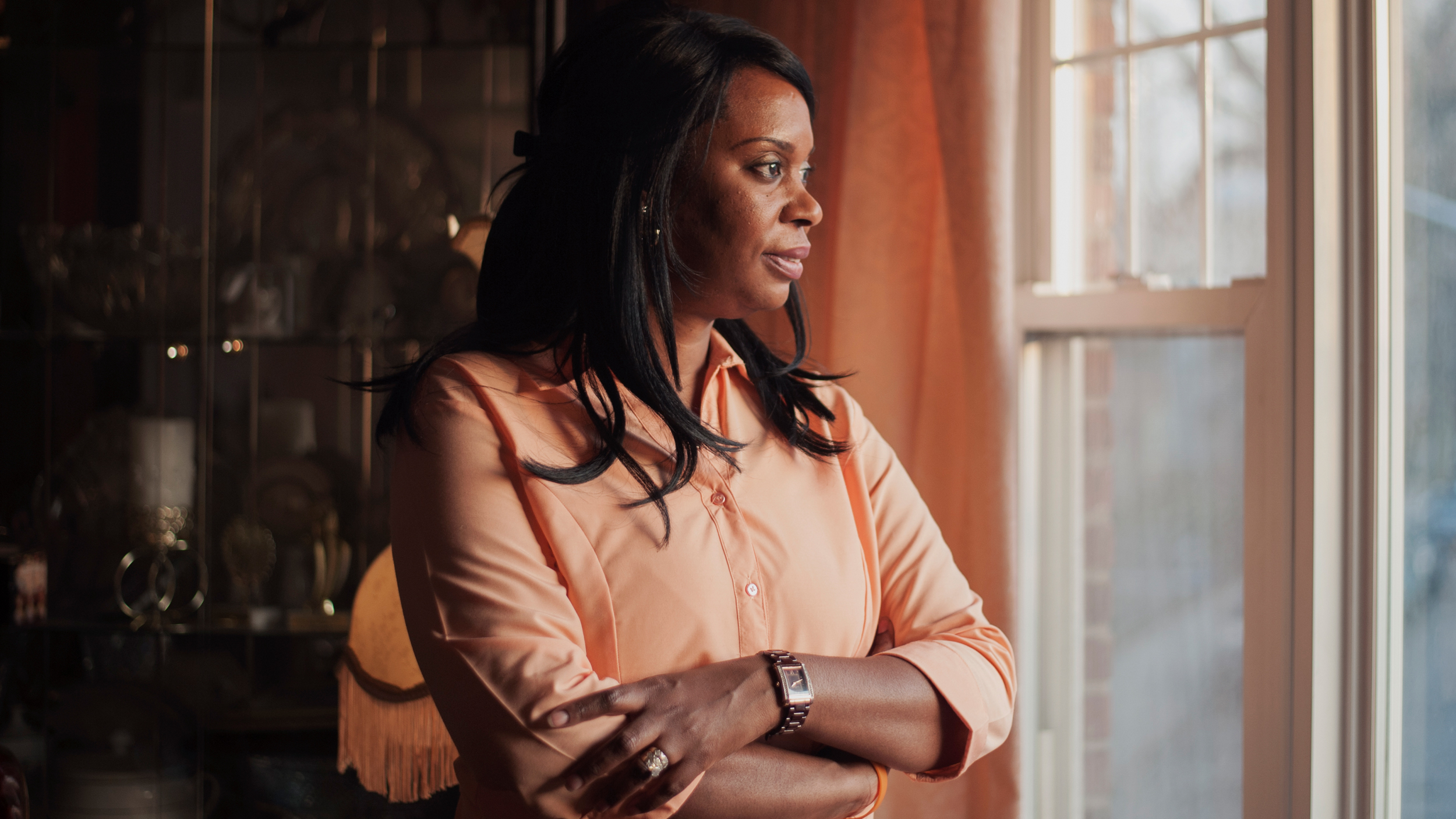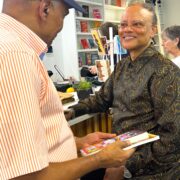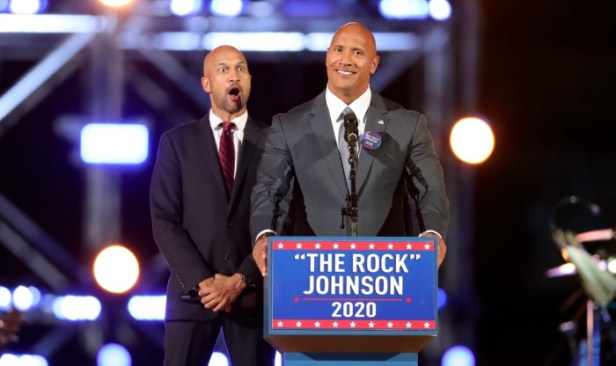
Shamoya McKenzie was on top of the world as she left midday basketball practice on New Year’s Eve 2016. The 6-foot-2 middle-schooler had just learned she was moving up to the high school varsity and her mother had promised to buy her a new pair of sneakers and a new phone.
Mother and daughter chatted excitedly as they drove home through the narrow streets of Mount Vernon, New York. Before long, traffic slowed and a car cut them off. Then a guy got out and started shooting at a man down the block. “I heard the sound,” Nadine McKenzie recalled, “but I was able to drive off.” She pulled her aging Toyota Camry around the corner and glanced at her 13-year-old daughter, who was slumping toward her from the passenger’s seat.
“Stop playing, Shamoya,’” her mother said. Then she looked closely and saw that her daughter was bleeding. A bullet had pierced the car’s back passenger side window, striking Shamoya in the head. McKenzie jumped out of the car and flagged down help. Shamoya was rushed to the hospital, but there was nothing doctors could do.
“It was too late,” her mother said, slowly shaking her head. “It was too late.”
Word of the shooting spread quickly through Mount Vernon, a predominantly black working-class city just north of the Bronx. The Rev. Hugh Marriott, whose daughter had played Catholic Youth Organization ball with Shamoya, got a text message asking him to go to Montefiore Mount Vernon Hospital. He put on his clericals and rushed over. As he approached the entrance, Marriott recognized faces from the city’s youth basketball circuit.
“I went in the room and Shamoya’s mother just grabbed me and started crying,” Marriott recalled. “I had no words.”

ELIAS WILLIAMS FOR THE UNDEFEATED
It is the kind of senseless tragedy Marriott has seen too frequently in Mount Vernon: one black person killing another. And that problem, he said, needs to be addressed head-on.
“Shamoya’s life was not snuffed out by systemic racism, or by some distant societal ill,” he said. “Her life was snuffed out by another African-American.”
In August 1979, venerable Ebony magazine published a 162-page special issue dedicated entirely to the problem of “black-on-black crime.” In a note to readers, John H. Johnson, the founder and publisher, explained that rampant crime was making too many black communities “beleaguered and fearful places.” He noted that blacks were much more likely than whites to be crime victims, and that most of the perpetrators of crime in black communities are black.
Decades later, those racial gaps persist, even as overall crime rates have declined sharply. The disparity is perhaps most disturbing when it comes to murder. In recent decades, African-Americans were six times as likely as whites to be homicide victims, according to Justice Department statistics. The carnage is staggering: 2,491 African-Americans were homicide victimsin 2013, the most recent year for which FBI statistics are available. An estimated 93 percent of those murders were committed by other African-Americans. The 2013 toll alone is equal to 72 percent of the 3,446 lynchingsdocumented by Tuskegee University researchers between 1882 and 1968. The comparison to nearly a century of deadly racist terror only underscores the alarming scope of the problem.
But in the age of Black Lives Matter, when many activists and leaders are focused on policies to reverse mass incarceration and stamp out police violence against African-Americans, the phrase “black-on-black crime” has taken on a new, more pejorative meaning. It is no longer seen as a description of a devastating problem that preoccupies many everyday African-Americans, but as a racial insult.
Critics say the term conjures images of black criminality while avoiding any mention of crime’s root causes, such as poverty, structural racism, a lack of jobs or hypersegregation. Besides, they argue, nobody talks about white-on-white crime.

ELIAS WILLIAMS FOR THE UNDEFEATED
It matters which words are used, they say, because they define the problem and point the way toward solutions. If people talk about “black-on-black crime,” rather than, say, inadequate schools or a lack of job training in poor communities, then the policies they support are likely to miss the mark.
“It is dangerous to talk about crime as disembodied from the economic structure or the educational structure that may foster it,” said Katheryn Russell-Brown, director of the Center for the Study of Race and Race Relations at the University of Florida Law School. “The reality is that there is a much larger social framework around it.”
But others worry that, given the destructive impact of high crime rates in many black communities, avoiding the term is like ignoring the proverbial elephant in the room. The realities of poverty, lack of opportunity and racism stand apart from the scourge of crime, they say, noting that most people in impoverished communities do not resort to lawlessness. Banning the term “black-on black crime,” they say, has the effect of cutting off discussion of perhaps the most pressing problem confronting many African-American communities.
“The idea that we should not talk about black-on-black crime or that the term is inherently racist really minimizes the voices of black people who are screaming for normal, safe lives,” said Michael Javen Fortner, a professor at City University of New York and author of Black Silent Majority, a book about African-American support for a tougher approach to criminal justice in New York City as crime spiked during the 1960s and 1970s. “Most people are like, ‘Look, I just want my kids to walk down the street and not have to worry. I want them to go to school. I want to go to work and to church, and not have to worry.’”
Fortner knows that anxiety firsthand. He grew up in a crime-scarred neighborhood in Brownsville, Brooklyn. He remembers family visitors constantly looking out of the apartment window to check on their parked cars. He had a brother who was stabbed to death when he was a toddler, and he says sadness lingered in his home “like accumulated dust.”
Most of all, he remembers a neighborhood of hardworking people who harbored seething contempt for the relative handful of hoodlums among them. Historically, he explained, African-Americans have stood together against white supremacy, making what he still calls black-on-black crime an especially egregious violation.
“To have somebody betray that sense of bond by, say, killing a kid is particularly horrendous,” he said. “It is an assault on an unarticulated social contract that we as black people have with one another.”
Former three-term Baltimore Mayor Kurt L. Schmoke, now president of the University of Baltimore, tried to make a similar point when speaking on a panel about police brutality at the National Urban League convention last summer. But he was all but shouted down.
“If you talk to the majority of black voters and homeowners in the neighborhoods about their public safety concerns, they would probably raise black-on-black crime as a bigger concern than police brutality,” Schmoke said.

ELIAS WILLIAMS FOR THE UNDEFEATED
But the reaction of the largely black audience was audible, and mostly unfavorable. A fellow panelist said that his point was akin to blaming African-Americans for their own pain. The moderator turned on him too, arguing that the phrase makes no sense, since white folks kill white folks, Hispanic folks kill Hispanic folks, and Asian folks kill Asian folks.
“Not in those numbers,” Schmoke interrupted.
Looking back, Schmoke is not apologetic. “It does seem to me that it’s appropriate to highlight the fact that our young African-American men are killing one another at a higher rate than anybody else,” he said.
Back when Schmoke got his political start in the 1980s, he remembers fellow black politicians talking directly about the problem. Parren J. Mitchell, Maryland’s first black member of Congress, helped create bumper stickers warning, “Us Killing Us=Genocide.”
These days, people more frequently rely on less evocative terms to describe the same problem. They talk about “urban crime,” “crime in poor areas,” “inner-city crime,” “proximity crime,” or just “crime.” But Schmoke is among those who finds all of the substitutes unsatisfactory.
“I understand that black-on-black crime has become a touchy phrase to use,” he said. “People have offered alternatives, but they all sounded like euphemisms. I am all for finding the right term, as long as we focus in on the right problem.”
Local leaders in Mount Vernon are hoping that Shamoya’s death marks a breaking point. Her killing has triggered an outpouring of support and activism that has bolstered her grieving mother and left many in the city determined to stand together against crime.
The day after her murder, people gathered at Mount Vernon High School to release balloons in her honor. Hundreds of mourners packed her funeral. Strangers sent so many spectacular flower arrangements that a separate van was needed to transport them to her gravesite. The funeral director went above and beyond, providing a horse-drawn, glass-enclosed carriage for Shamoya’s casket.
Youth teams from neighboring cities helped raise money at their games, and a GoFundMe page brought in more than $31,000 to help Shamoya’s mother. The basketball team from her dream school, the University of Connecticut, declared her an honorary member. Also, her former AAU coach and other coaches have launched the Shamoya McKenzie Foundation to fund youth programs and scholarships in Shamoya’s memory.
“The community has really come together,” Nadine McKenzie said. “People are grieving with me. Some people, when they see me on the street, just say ‘Come here. Let me give you a hug.’ ”
A few days after Shamoya’s funeral, police arrested David Hardy, now 22. They said he was gunning for a 29-year-old gang rival when he accidently cut down the budding basketball star. He has pleaded not guilty and is awaiting trial in the Westchester County Jail on charges including second-degree murder.
His arrest brought both solace and sadness. People were relieved to know that a suspected killer was off the street. But at the same time, his backstory only compounded the tragedy and made any lasting solutions to violence feel all the more elusive.
Weeks before the shooting, Hardy had lost a part-time job in the city’s recreation department because funding for the post had expired. He had gotten the job only because he failed to disclose a 2012 robbery conviction. Just two days before Shamoya’s murder, a warrant was filed against Hardy for sending a string of texts threatening to shoot up his former girlfriend’s house, and to shoot her father.
Worse, he was not some stranger to the city. Instead, Hardy was every bit a child of Mount Vernon. He had once gone to Graham Elementary School, the same K-8 school that Shamoya attended. Also, he came up playing basketball with the Mount Vernon Junior Knights, the club where Shamoya got serious about the game.
“The shooting took on a double meaning for us, because we had coached him too,” said Dwayne “Coach D” Murray, program director for the Mount Vernon Junior Knights.

ELIAS WILLIAMS FOR THE UNDEFEATED
Dwayne Brown, an event planner who has run several youth programs in the city and heads the Mount Vernon Chamber of Commerce, also knows Hardy.
“I can put a face on both ends of this situation,” he said. “On one hand, it could have been one of my daughters killed. Also, the young man who was charged attended a camp I ran some years ago. When I heard it was him, I asked myself, ‘Did I miss something? Could we have done something to prevent this?’ ”
That question is being asked with new urgency since Shamoya’s death. More than ever, city leaders and others say there is real talk about ways to end the drumbeat of violence they had come to tolerate through the years. Less than a week before Shamoya’s murder, O’Neill Bandoo, a club owner and father, was killed and five others were wounded, allegedly by a man who was angry for being kicked out of Bandoo’s club. All of the victims, as well as the alleged shooter, were black.
“Enough is enough,” said Mayor Richard Thomas, 34, who was born and raised in Mount Vernon. He called Shamoya’s death especially devastating because of her innocence and her vast potential. She was an honor roll student and her coaches thought she had the tools necessary to earn a Division I college scholarship.
Thomas is pushing on multiple fronts to fight crime. He wants to get more police officers on the street and strengthen the city’s recreation programs. He is also working to pull together the millions of dollars it will take to renovate Memorial Field, a 10,000-seat stadium near downtown that used to host high school football games and once hosted a Jackson Five concert. In recent years, it has been used mainly as an illegal dump.
A lack of money hampers all those efforts. For now, the city is building a Wall of Legends that will hide the eyesore that the field has become and honor some of the city’s sports heroes with colorful murals. Late Major League pitcher Ralph Branca; former NBA stars Earl Tatum, Ben Gordon, Scooter and Rodney McCray, Gus Williams and his late brother, Ray Williams; and 2016 Olympic sprinter Deajah Stevens, are among the famed athletes from Mount Vernon.
One year when he was in high school, Thomas said, eight people he knew were killed in the streets. He did not get caught up in that madness mainly because of sports. He caddied at local golf courses and played football, basketball and golf in high school. Before graduating, he got interested in business, which eventually propelled him to a master’s degree in business administration at New York University.
“We’re a black city and black communities need to succeed, not get lost in self-defeat,” Thomas said.
“When it comes to black-on-black crime, there is a lack of understanding of what hopeless and joblessness do to people. They breed desperation. So you have to treat violence like you treat the common cold: by first recognizing there a problem and that there is no one cause for it.”

ELIAS WILLIAMS FOR THE UNDEFEATED
Michael A. Fletcher is a senior writer at The Undefeated. He is a native New Yorker and longtime Baltimorean who enjoys live music and theater.










